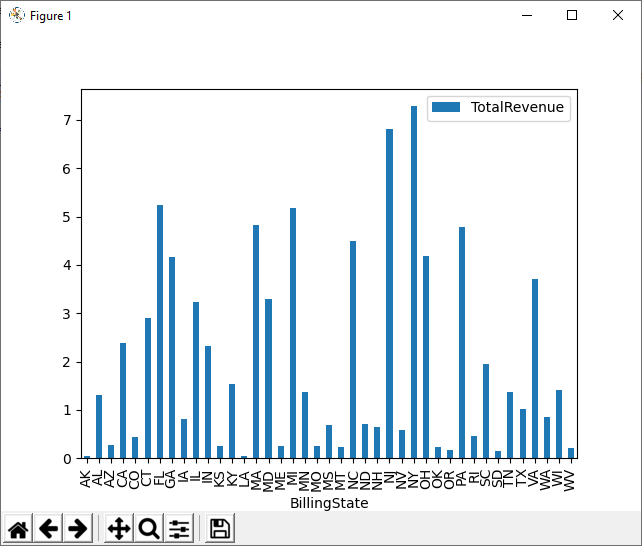Discover how a bimodal integration strategy can address the major data management challenges facing your organization today.
Get the Report →How to Visualize QuickBooks Data in Python with pandas
Use pandas and other modules to analyze and visualize live QuickBooks data in Python.
The rich ecosystem of Python modules lets you get to work quickly and integrate your systems more effectively. With the CData Python Connector for QuickBooks, the pandas & Matplotlib modules, and the SQLAlchemy toolkit, you can build QuickBooks-connected Python applications and scripts for visualizing QuickBooks data. This article shows how to use the pandas, SQLAlchemy, and Matplotlib built-in functions to connect to QuickBooks data, execute queries, and visualize the results.
With built-in optimized data processing, the CData Python Connector offers unmatched performance for interacting with live QuickBooks data in Python. When you issue complex SQL queries from QuickBooks, the driver pushes supported SQL operations, like filters and aggregations, directly to QuickBooks and utilizes the embedded SQL engine to process unsupported operations client-side (often SQL functions and JOIN operations).
About QuickBooks Data Integration
CData simplifies access and integration of live QuickBooks data. Our customers leverage CData connectivity to:
- Access both local and remote company files.
- Connect across editions and regions: QuickBooks Premier, Professional, Enterprise, and Simple Start edition 2002+, as well as Canada, New Zealand, Australia, and UK editions from 2003+.
- Use SQL stored procedures to perform actions like voiding or clearing transactions, merging lists, searching entities, and more.
Customers regularly integrate their QuickBooks data with preferred tools, like Power BI, Tableau, or Excel, and integrate QuickBooks data into their database or data warehouse.
Getting Started
Connecting to QuickBooks Data
Connecting to QuickBooks data looks just like connecting to any relational data source. Create a connection string using the required connection properties. For this article, you will pass the connection string as a parameter to the create_engine function.
When you are connecting to a local QuickBooks instance, you do not need to set any connection properties.
Requests are made to QuickBooks through the Remote Connector. The Remote Connector runs on the same machine as QuickBooks and accepts connections through a lightweight, embedded Web server. The server supports SSL/TLS, enabling users to connect securely from remote machines.
The first time you connect, you will need to authorize the Remote Connector with QuickBooks. See the "Getting Started" chapter of the help documentation for a guide.
Follow the procedure below to install the required modules and start accessing QuickBooks through Python objects.
Install Required Modules
Use the pip utility to install the pandas & Matplotlib modules and the SQLAlchemy toolkit:
pip install pandas pip install matplotlib pip install sqlalchemy
Be sure to import the module with the following:
import pandas import matplotlib.pyplot as plt from sqlalchemy import create_engine
Visualize QuickBooks Data in Python
You can now connect with a connection string. Use the create_engine function to create an Engine for working with QuickBooks data.
engine = create_engine("quickbooks:///?URL=http://remotehost:8166&User=admin&Password=admin123")
Execute SQL to QuickBooks
Use the read_sql function from pandas to execute any SQL statement and store the resultset in a DataFrame.
df = pandas.read_sql("SELECT Name, CustomerBalance FROM Customers WHERE Type = 'Commercial'", engine)
Visualize QuickBooks Data
With the query results stored in a DataFrame, use the plot function to build a chart to display the QuickBooks data. The show method displays the chart in a new window.
df.plot(kind="bar", x="Name", y="CustomerBalance") plt.show()

Free Trial & More Information
Download a free, 30-day trial of the CData Python Connector for QuickBooks to start building Python apps and scripts with connectivity to QuickBooks data. Reach out to our Support Team if you have any questions.
Full Source Code
import pandas
import matplotlib.pyplot as plt
from sqlalchemy import create_engin
engine = create_engine("quickbooks:///?URL=http://remotehost:8166&User=admin&Password=admin123")
df = pandas.read_sql("SELECT Name, CustomerBalance FROM Customers WHERE Type = 'Commercial'", engine)
df.plot(kind="bar", x="Name", y="CustomerBalance")
plt.show()





